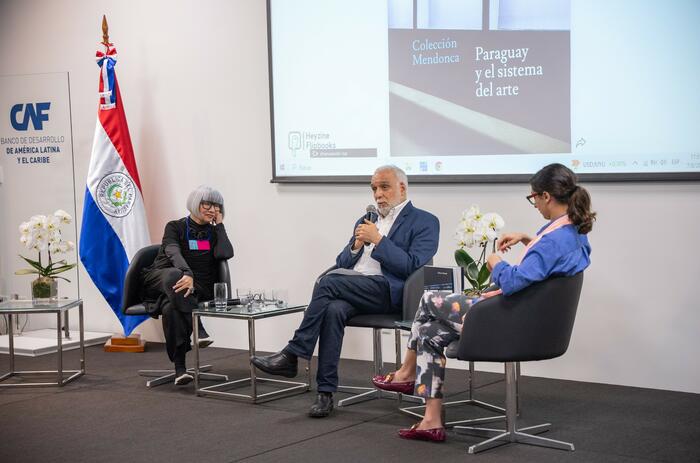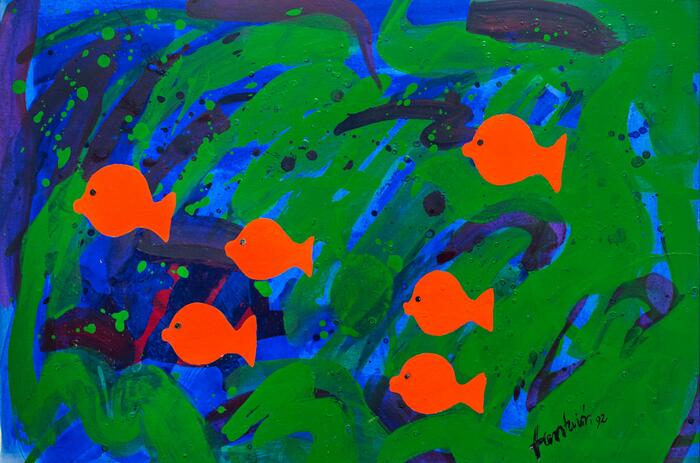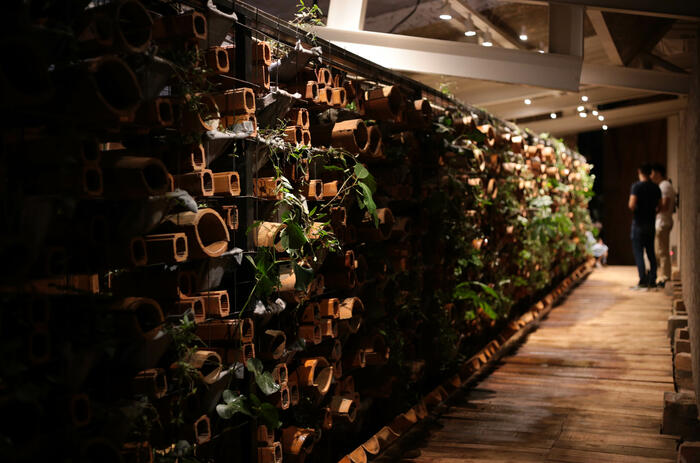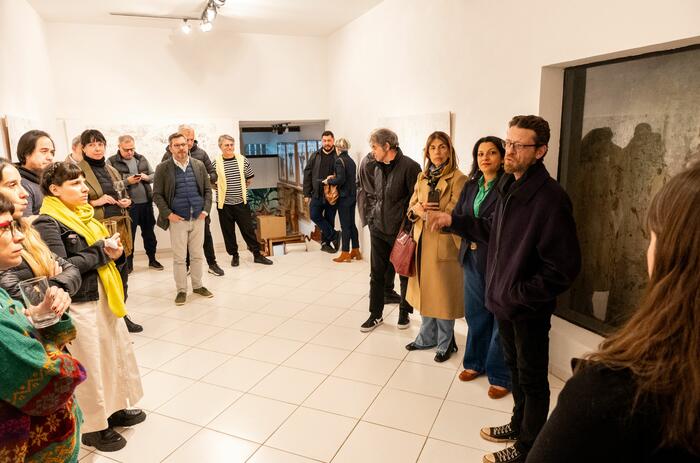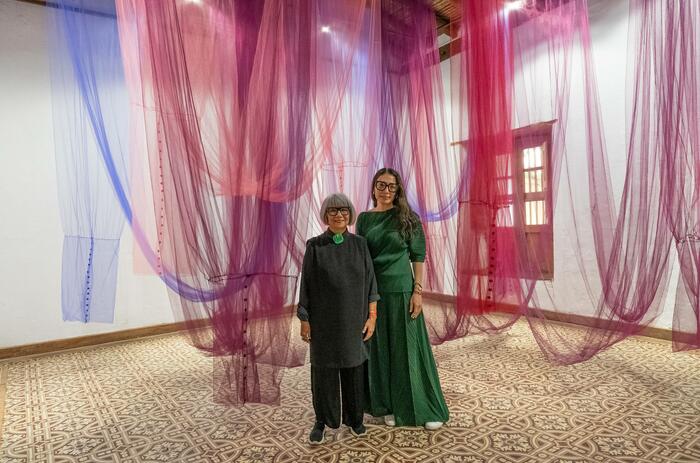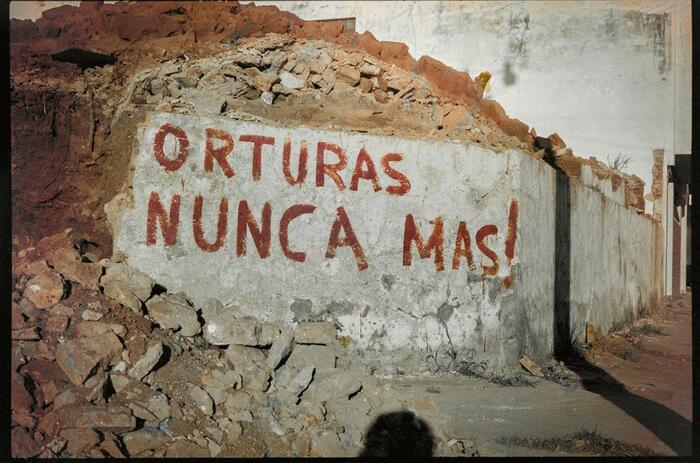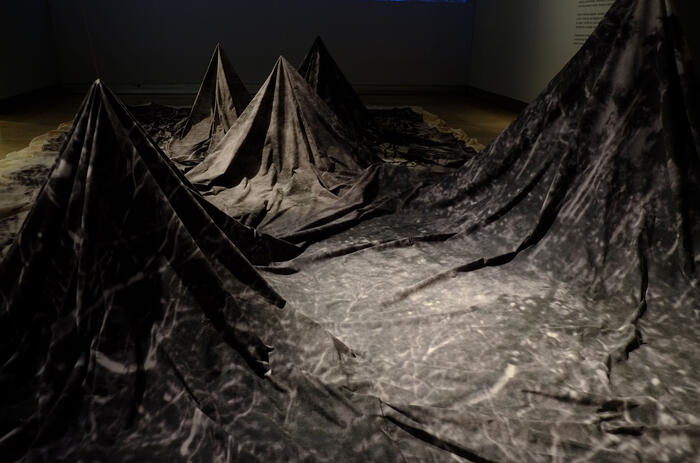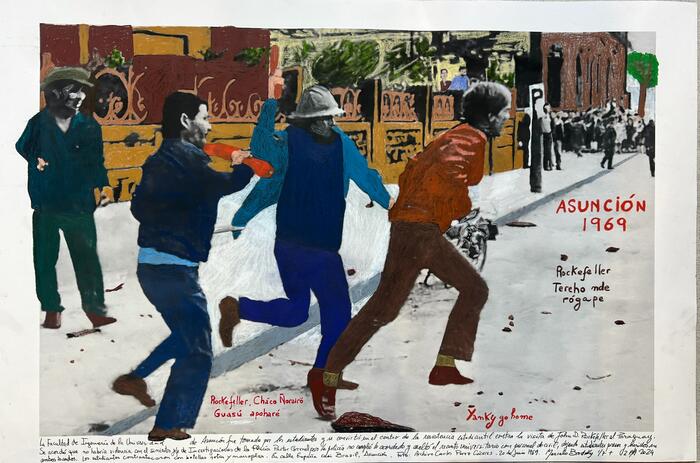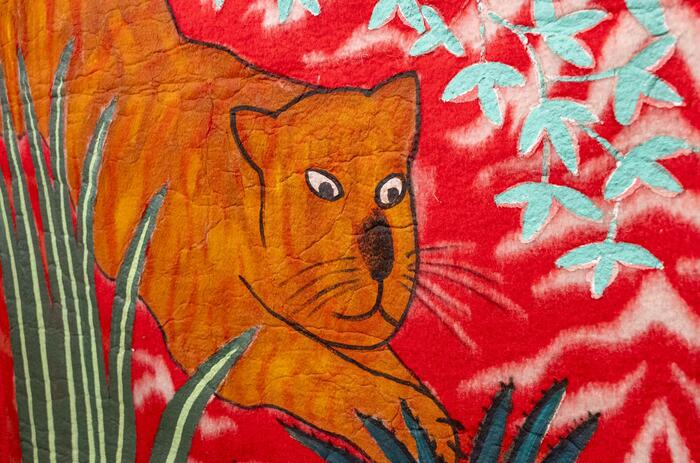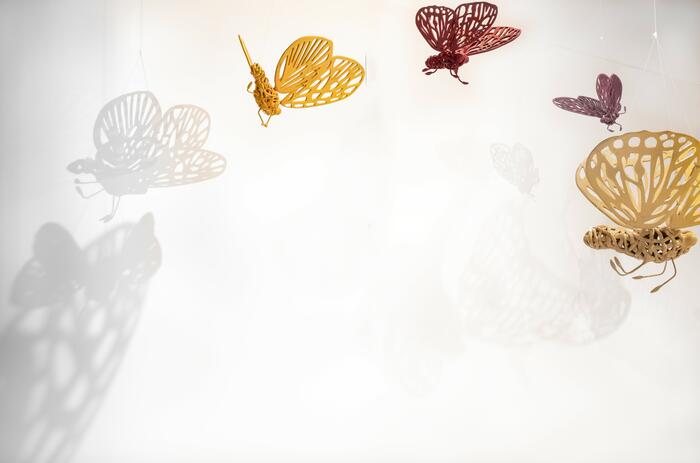DAMIANA RETURNS HOME: GUSTAVO BENÍTEZ AT EXAEDRO
Gustavo Benítez presents at Exaedro the exhibition Damiana vuelve a casa (Damiana returns home), an exhibition that explores a story of identity, pain and abandonment. It is presented in the context of the art week Pinta Sud | ASU 2024, from August 5 to 11, and is curated by Ticio Escobar.
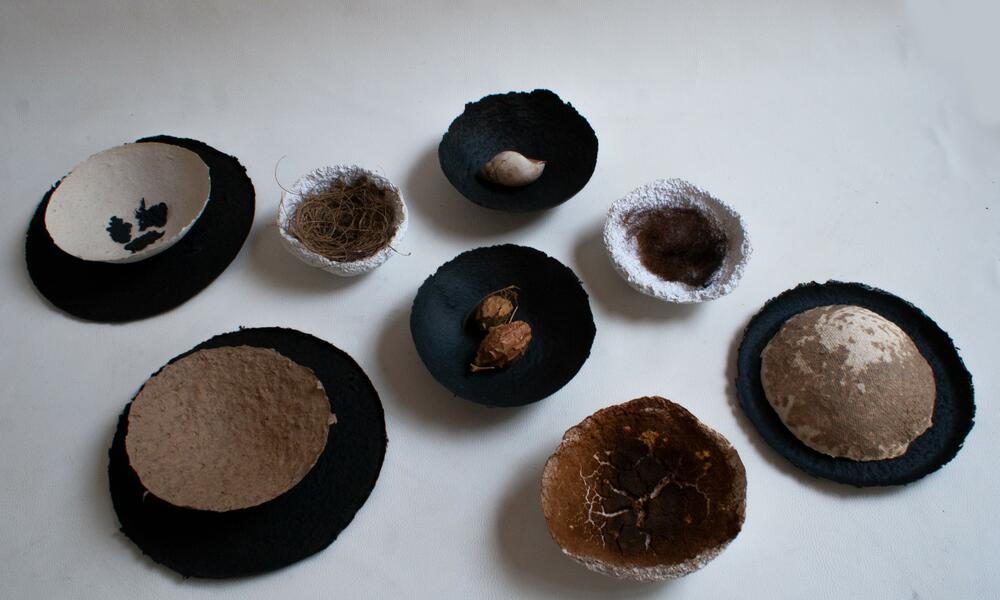
Excerpts from the curatorial text "The forms of misfortune"
In 1896, a 3-year-old Aché girl was kidnapped by white settlers, baptized "Damiana" by them and taken to Argentina to be subjected to racist scientific experiments, in the course of which she died as a teenager. One hundred years later, her remains were recovered by the Aché and buried according to the rituals of their culture, under the name of Kryygi. Gustavo Benítez's exhibition is based on this unfortunate event and, in general, on the tragedy of the Aché people; but in the course of this unfortunate history, he does not intend to represent the colonialist crime or its symbolic restitution, but to present, in the form of flashes, fragmentary moments that survive, that resist ecocide and environmental plundering in the face of the imagination of other possible conditions.
Gustavo Benítez does not tell a story in the key of a chronicle, he does not even literally expose a denunciation. He limits himself to collecting residues of collective memory and fragments of the forest and inventorying objects of the Aché tradition in order to create, from their echoes, other objects connected to his own time. The artist works with two photographs of Damiana's face; one taken while she was alive and the other, corresponding to a sort of death mask made with the skin dissected and marked by the cuts of the macabre operation. He superimposes both photographs in different layers, prints the result in cyan and black colors and presents the image illuminated with black light in a small room of the gallery that suggests the site of an altar or the cell of a prison. The other works in the exhibition are based on major objects of the Aché culture that express in their stubborn survival the forms of resistance of this people.
The Ache aesthetic is radically unique. Unlike that of any other ethnic group, it does not employ any primary tone and uses a range composed of blacks, grays and browns: they only use the colors of the material used. The result is a world of severe images, perhaps too sullen; but they manage to express themselves in exact, profoundly original forms, which allow us to speak of a beauty of their own, valuably singular. Gustavo Benítez's own work -focused on matter, its inner intricacies, its textures and tones- lends itself to connect with that intense and rough world, stripped of artifice; as if obeying the canon of the rigorous Aché palette, the cellulose paste he uses does not allow itself to be dyed, it only admits natural colors.
The reparation that the recovery of Damiana's image means for the Aché people, as well as the continuity of part of its forests and the persistence of its main forms, signifies a political conquest, a victory of the resistant memory. The residues of memory and the remains of the forest -the first scene- are signs of a loss that art could, should, turn into small promises of new scenes, hopefully propitious. Meaning is at stake in the course of that possibility.
–Ticio Escobar. Asuncion, July 2024.
Damiana Vuelve a casa. Exhibition by Gustavo Benítez.
Until August 17, 2024.
Exaedro. Aca Caraya 595, Asunción Paraguay.

